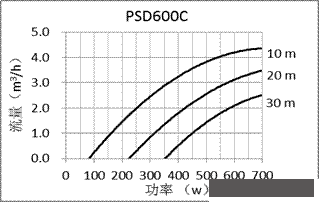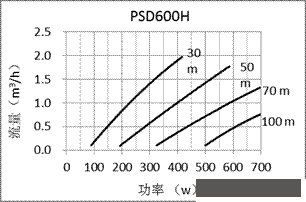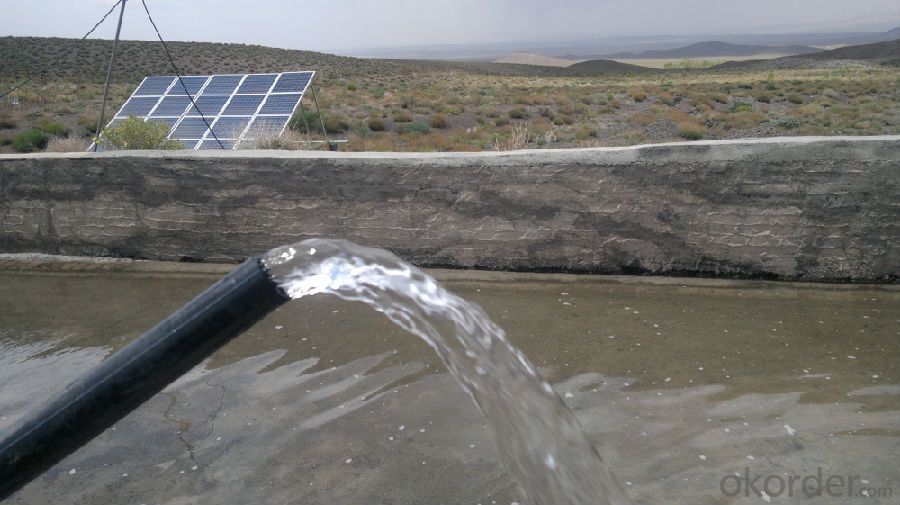DC Solar Pumps, DC Solar Pumping System.
- Loading Port:
- Shekou
- Payment Terms:
- TT OR LC
- Min Order Qty:
- 20 set
- Supply Capability:
- 500000 set/month
OKorder Service Pledge
OKorder Financial Service
You Might Also Like
Product
Solar Water Pump is the pumping facility driven by solar energy, which consists of a solar pumping inverter and a pump. Solar water pumps kit is called solar pumping system combining with solar arrays designed according to different head and daily water flow for application. System is widely utilized for agriculture irrigation,desert control,pasture animal husbandry,city landscaping,daily water supply, etc.
In recent years, with the development of photovoltaic products from city application to huge demands of agriculture,pasture,desert areas, Solar Pond Pump has become the leading products combining photovoltaic industry with traditional industry such as agriculture water conservancy,desert control,daily water supply,city landscaping, etc.
Solar Pump driven by infinite solar energy, works from sunrise, and stops at sunset, need no connection to grid power nor diesel oil and battery. System can irrigate directly or store water instead of electricity in a reservoir. Solartech Solar fountain Pumps works with sprinkling irrigation, drip irrigation and infiltrating irrigation facilities, can be more efficient for water saving and dramatically lower the cost of using fossil energy.
Technical Features
♦ High efficient DC brushless motor requires less solar array. Rich social benefits.
♦ Optional centrifugal pump for big flow and helical rotor pump for high lift.
♦ High efficient semiconductor device used in main circuit. High reliability. Up to 98% conversion efficiency
of controller.
♦ Independent intellectual property of dynamic VI maximum power point tracking (MPPT) algorithm. Fast
response and good stability. 99% MPPT efficiency.
♦ Full automatic operation. Complete protection functions. Integrated with water level monitor to prevent
overflow and dry running.
♦ Full aluminum alloy case. IP52 protection grade. Ambient temperature: -20~+60℃.
Product Specifications
Model | Rated Power | Max. Flow | Max. Lift | Daily Water Supply | Outlet Dia. | Pump Dia. |
PSD600C | 600W | 4.5 m3/h | 30 m | 10 - 20 m3 | 1"1/4 | 4" |
PSD600H | 600W | 2 m3/h | 100 m | 5 - 10 m3 | 1"1/4 | 4" |
Solar Array Configuration
Max. Input Power | Max. Input Current | Max. Open Circuit Voltage | Recommended MPP Voltage |
1000W | 15A | 150VDC | 60 - 120VDC |
Recommended Design | Solar Panel | Connection | Total Power |
Configuration 1 | 190W / 35Vmp | 2 pcs x 2 strings | 760W |
Configuration 2 | 250W / 30Vmp | 3 pcs x 1 string | 750W |
Performance Curve




- Q:Can solar energy systems be used for powering research laboratories or scientific facilities?
- Solar energy systems are indeed capable of powering research laboratories or scientific facilities. The scientific community is increasingly embracing solar energy due to its numerous advantages. To begin with, solar energy systems are highly dependable and require minimal upkeep. Once installed, they can consistently and continuously supply power to research laboratories or scientific facilities, ensuring uninterrupted operations. This is particularly crucial for facilities that rely on continuous power, such as those conducting experiments or operating sensitive equipment. Moreover, solar energy is a clean and renewable power source. By utilizing solar energy systems, research laboratories and scientific facilities can significantly reduce their carbon footprint and contribute to the global fight against climate change. This aligns with the scientific community's commitment to sustainability and environmental responsibility. In addition, solar energy systems can help lower energy costs for research laboratories and scientific facilities. Although the initial investment in installing solar panels may be higher, the long-term savings on electricity bills can be substantial. This frees up resources that can be allocated to other important research activities or equipment upgrades. It is also worth noting that advancements in solar technology have enhanced its efficiency, enabling it to generate power even in areas with less sunlight. This means that research laboratories and scientific facilities located in regions with varying weather conditions can still benefit from solar energy systems. In conclusion, solar energy systems offer a viable and advantageous solution for powering research laboratories or scientific facilities. They provide reliable, clean, and cost-effective energy, aligning with the sustainability goals of the scientific community. As solar technology continues to improve, the use of solar energy in research facilities is expected to become even more widespread.
- Q:Can a solar energy system be installed in a remote location?
- Yes, a solar energy system can be installed in a remote location. Solar panels can be set up in areas that are far from the electric grid, allowing for the generation of clean and renewable energy in remote and isolated places. These systems can provide power for various purposes, including residential, commercial, and even off-grid applications such as remote cabins, research stations, or telecommunications infrastructure. As long as there is sufficient sunlight, a solar energy system can be installed and provide a reliable source of electricity in remote locations.
- Q:How do solar energy systems contribute to reducing greenhouse gas emissions?
- Solar energy systems contribute to reducing greenhouse gas emissions in several ways. Firstly, solar power is a renewable energy source that does not release any harmful greenhouse gases during its operation. By replacing fossil fuel-based electricity generation, solar energy systems significantly decrease the amount of carbon dioxide and other greenhouse gases emitted into the atmosphere. Secondly, solar energy can be used for heating and cooling purposes, reducing the reliance on fossil fuel-powered systems that contribute to greenhouse gas emissions. Lastly, the widespread adoption of solar energy systems encourages a shift towards a more sustainable and environmentally friendly energy mix, leading to long-term reductions in greenhouse gas emissions.
- Q:What is the impact of temperature on solar energy system performance?
- Temperature can have a significant impact on solar energy system performance. As the temperature increases, the efficiency of solar panels tends to decrease. This is because higher temperatures can cause the panels to operate at a higher voltage, resulting in a drop in overall efficiency. Additionally, excessive heat can also lead to a decrease in the lifespan of solar panels. However, it is worth noting that cold temperatures can actually benefit solar panels, as they tend to increase their efficiency. Therefore, temperature variations need to be carefully considered when designing and maintaining solar energy systems for optimal performance.
- Q:Can solar energy systems be used in powering beauty salons or spas?
- Yes, solar energy systems can definitely be used to power beauty salons or spas. Solar energy is a renewable and sustainable source of power that can help reduce the dependence on grid electricity and minimize the carbon footprint of these establishments. By installing solar panels on the roof or other suitable areas, beauty salons and spas can generate their own electricity and reduce their energy costs in the long run. Beauty salons and spas typically require a significant amount of electricity to operate hair dryers, hair straighteners, curling irons, lighting, air conditioning, and other equipment. Solar energy systems can easily meet these power demands, especially during daylight hours when the sun is shining. Excess electricity generated during the day can be stored in batteries or fed back into the grid, ensuring a continuous supply of power at all times. Moreover, solar energy systems can help improve the sustainability and environmental performance of beauty salons and spas. By switching to solar power, these establishments can significantly reduce their carbon emissions and contribute to the fight against climate change. Additionally, using solar energy can help attract environmentally conscious customers who appreciate businesses that prioritize sustainability. In summary, solar energy systems are a viable option for powering beauty salons and spas. They can provide a reliable and sustainable source of electricity, reduce energy costs, and contribute to a greener and more environmentally friendly business operation.
- Q:Can solar energy systems be installed in urban areas?
- Yes, solar energy systems can be installed in urban areas. In fact, urban areas have a great potential for solar energy due to the availability of rooftops, parking lots, and other open spaces. Solar panels can be integrated into buildings and infrastructure, providing clean and renewable energy to power homes, businesses, and even entire neighborhoods. Additionally, advancements in technology have made solar panels more efficient and aesthetically pleasing, making them suitable for urban environments.
- Q:Can solar energy systems be used in areas with limited space for ground-mounted installations?
- Solar energy systems can still be used in areas with limited ground space. Instead of traditional ground-mounted installations, alternative options like roof-mounted solar panels or vertical installations can be utilized. Roof-mounted solar panels are particularly popular for homes and buildings with limited ground space. They make use of the available roof area to capture sunlight and generate electricity. Another option is vertical solar panel installations, where panels are mounted on walls or other structures. These vertical installations allow for solar energy generation in tight spaces or even on building facades. Therefore, even in places with limited ground space, solar energy systems can still be effectively utilized through alternative mounting options.
- Q:Can a solar energy system be used to charge electric vehicles?
- Yes, a solar energy system can be used to charge electric vehicles. Solar panels generate electricity from the sun's rays, and this electricity can be used to charge the batteries of electric vehicles. These solar panels, also known as photovoltaic (PV) panels, capture sunlight and convert it into direct current (DC) electricity. This DC electricity can then be converted into alternating current (AC) electricity using an inverter, which is compatible with the charging requirements of electric vehicles. By connecting the solar energy system to an electric vehicle charging station, the solar-generated electricity can directly charge the vehicle's battery. This renewable energy source not only reduces the reliance on fossil fuels but also helps to decrease greenhouse gas emissions associated with transportation. Furthermore, the excess electricity generated by the solar panel system during daylight hours can be stored in batteries or fed back into the grid for later use, ensuring a continuous and sustainable power supply for charging electric vehicles.
- Q:Can solar energy systems be used for powering off-grid eco-tourism destinations?
- Yes, solar energy systems can definitely be used for powering off-grid eco-tourism destinations. Solar panels can be installed to harness the power of the sun and convert it into electricity, providing a sustainable and clean energy source for these destinations. This not only reduces their dependence on traditional fossil fuel generators but also minimizes their carbon footprint, aligning with the eco-friendly practices of these destinations. Additionally, solar energy systems can be designed to store excess energy in batteries, ensuring a continuous power supply even when the sun is not shining.
- Q:Are there any risks of electrical fires with solar energy systems?
- Yes, there are potential risks of electrical fires associated with solar energy systems. While solar energy systems are generally considered safe, there are a few factors that can increase the risk of electrical fires. One of the main risks is improper installation or maintenance of the system. If the wiring is not done correctly or if there are issues with the electrical connections, it can lead to overheating and potential fire hazards. Additionally, if the solar panels are not properly grounded or if there are faults in the system, it can also increase the risk of electrical fires. It is crucial to hire qualified professionals for installation and regular maintenance of solar energy systems to minimize these risks. Fire safety precautions such as using appropriate wiring, installing proper fire detection and suppression systems, and ensuring adequate ventilation around the solar panels can further reduce the risk of electrical fires. Overall, while solar energy systems are generally safe, it is important to be aware of these risks and take necessary precautions to mitigate them.
1. Manufacturer Overview |
|
|---|---|
| Location | |
| Year Established | |
| Annual Output Value | |
| Main Markets | |
| Company Certifications | |
2. Manufacturer Certificates |
|
|---|---|
| a) Certification Name | |
| Range | |
| Reference | |
| Validity Period | |
3. Manufacturer Capability |
|
|---|---|
| a)Trade Capacity | |
| Nearest Port | |
| Export Percentage | |
| No.of Employees in Trade Department | |
| Language Spoken: | |
| b)Factory Information | |
| Factory Size: | |
| No. of Production Lines | |
| Contract Manufacturing | |
| Product Price Range | |
Send your message to us
DC Solar Pumps, DC Solar Pumping System.
- Loading Port:
- Shekou
- Payment Terms:
- TT OR LC
- Min Order Qty:
- 20 set
- Supply Capability:
- 500000 set/month
OKorder Service Pledge
OKorder Financial Service
Similar products
New products
Hot products
Hot Searches
Related keywords
































